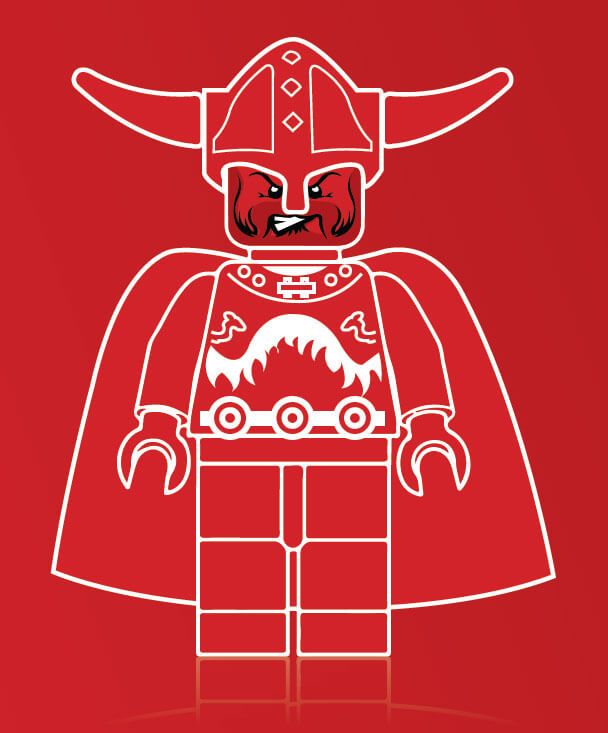There’s something about Scandinavia
Wanting to write a piece about Scandinavian brands, following the recent death of Ikea founder Ingvar Kamprad, I asked my marketing analyst, who happens to come from Sweden, for a view. What did she make of my initial hypothesis, that the region punches above its weight for great global brands per head of population?
“I think you’ll find they are mostly Swedish,” she said. Not quite true, as it turns out, but it illuminated a deeper truth about “Scandinavia” – that it isn’t really a place but a conceptual cluster, a convenience imposed from outside, masking the individualism and rivalries of Denmark, Norway and Sweden.
It’s not an edgy, antagonistic rivalry, though, like that between the English and the Scots; the citizens of the three countries will gladly come together either conceptually or commercially when it’s prudent to do so. They pull off the trick of being proud of their individual culture and co-operative with their near neighbours.
In the fractal nature of things, that combination of individualism and communality plays out at the everyday levels of these societies, too – a rare alloy of extremes in a world where cultures tend to veer toward one or the other.
I spent part of my childhood in Copenhagen and, looking back, can perceive the imprints of that healthy fusion. It amazed me then that there were no uniforms and each child could wear whatever they wanted to school. Even at the age of eight, a child’s individual character was respected and allowed to flourish.
But at the communal level – funded willingly through higher taxes – investment in the school system was vastly better than in the UK. So I was even more astounded that the lovely classrooms had carpets underfoot. Carpets!
Scandinavian brands bear this same stamp of open duality. They embrace the extremes of individual genius in their creation and ubiquitous benefit in their application.
For quirky genius, Kamprad himself must serve as the honorary example. We’ve got so used to Ikea now that it’s hard to see it for the astonishingly weird concept it must then have seemed. Imagine him explaining it to a, doubtless confused, colleague back in 1956.
 Kamprad: “So, we’ll show people a picture of a nice table, but what we’ll actually sell them is a sheet of wood, four legs and a bag of screws. And instructions to make it themselves. All it will take is willpower and some Allen keys.”
Kamprad: “So, we’ll show people a picture of a nice table, but what we’ll actually sell them is a sheet of wood, four legs and a bag of screws. And instructions to make it themselves. All it will take is willpower and some Allen keys.”
Colleague: “What’s an Allen key?”
Denmark’s Lego must have sounded every bit as bonkers at first. The kid doesn’t get a toy, not even really a kit – certainly not back then. Just a box of small, knobbly plastic bricks. The rest is down to them.
Who would name a high-street fashion brand “& Other Stories”? The iconoclasts from Stockholm’s H&M. Who would put a rectangular metal block on four wheels, and expect it to take on the sleek offerings of BMW and Audi? The freethinkers of Gothenburg’s Volvo. Who opens a retail chain selling items you never knew you needed until you stepped inside? The crazy gang at Copenhagen’s Tiger.
Yet these strange ideas take flight and conquer the world. Natural democratisers, Scandinavian entrepreneurs seem to possess an instinct for what is nuts today but will be normal tomorrow. Even when Ikea started to take off it must have required extraordinary vision to imagine the widespread acceptance of self-made furniture in a world where people increasingly opted for ready-made meals.
“Ja, they can’t be bothered to knock up a lasagne but they’ll make their own wardrobe. Just watch. And anyway, I’ll throw in some meatballs in store, so they won’t go hungry.”
“You’re gonna sell flat-pack furniture and meatballs??”
And in case you think Norway’s not getting a look-in here, keep an eye on the biggest grocery masterbrand you’ve never heard of: Orkla. Based in Oslo but serving the region, it markets the kind of things Unilever and Procter & Gamble do – everything from soup to shampoo.
But – the individuality bit – it celebrates and retains local brands, right down to micro regions. Not just one tomato sauce, but eight. The communality dimension comes from the shared back office, logistics and R&D capability, which keep prices down. Orkla will challenge beyond its heartland soon enough.
And we marketers could do worse than challenge ourselves to adopt the Scandinavian duality in our teams and processes. Not death by collaboration, nor genuflection to maverick brilliance either. Instead, the best of both. It’s a tricky adjustment to make, but not impossible. All that’s needed is willpower and a few mental Allen keys.
Lego
Denmark’s most famous brand has now produced more than 560 billion Lego parts: 86 bricks per person on Earth.
Carlsberg
High standards in brewing and branding have left the Danish beer and its logo largely unchanged for more than 100 years.
Ikea
A furniture store and the world’s biggest publisher: the Ikea catalogue has a print-run of 203 million copies in 35 languages (more than the Bible and the Koran).
H&M
The Swedish fashion giant is famous for its collaborations. In November people queued overnight at H&M’s Regent Street store in London to get their hands on its latest Erdem collection.
Helly Hansen
After 24 cold years at sea, Norwegian Hansen started producing oilskin outerwear in 1877. Over the years its waterproof, breathable jackets have kept lumbermen, offshore oil workers and urban youth warm and dry.
Not forgetting…
Spotify, Volvo, Saab (Sweden); Bang & Olufsen, Pandora, Tiger (Denmark); Skype (Sweden/Denmark); Stokke (maker of the Tripp Trapp chair) (Norway)
